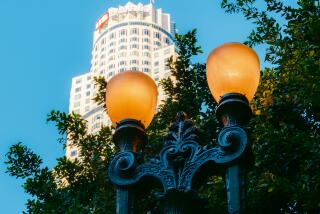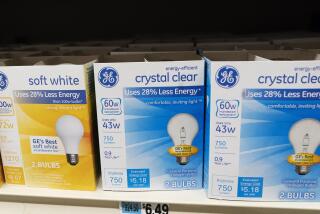Out With Old Fluorescent Fixtures and in With New
The first artificial source of light was nothing more than a burning stick--about a million years ago. About 5,000 years ago, a wick and some oil in a clay jar became the first lamp and replaced the wooden torch as the source of artificial illumination.
Lamps got a run for their money in the first century AD, when candles were invented. Although not as bright as an oil lamp, the candle, “the no-spill lamp,” was convenient and challenged the oil lamp as the main source of light during the Middle Ages.
In the late 1700s, a tubular wick was developed for gas or oil that allowed air to circulate inside as well as outside. This substantially increased the luminance of the flame. A cheaper and brighter mantle was invented in 1885, but by that time, Thomas Edison’s electric light (1879) was well on its way.
Although it was nearly 40 years before incandescent bulbs improved to the point where they worked well and were economical to use, more was yet to come. In 1938 the fluorescent lamp was invented and at first seemed condemned to use in kitchens and commercial buildings where its badly skewed spectrum produced headaches and irritability for decades.
But, as lighting technology has improved, so has fluorescent lighting. Stepping out of the rubble of lighting design and discovery, the compact fluorescent is taking the lead in the new “cost versus value” equation.
In fact, with all the concern about energy conservation, it’s a wonder that fluorescent lighting isn’t all that’s available. Its energy efficiency and lasting quality are unmatched by anything incandescent. And, better yet, fluorescent lighting is softer than regular lighting. It’s almost completely shadow-free. For folks who have to work inside all day, modern fluorescent lighting is easier on the eyes. And that means less eyestrain and fewer headaches.
Even with all of its advantages, a modern fluorescent light can still go haywire--not to mention that older fluorescent fixtures can make a lot of noise. It is not a big deal to change a compact fluorescent--unscrew the old one and reverse the process to install a new one. But the same doesn’t hold true for the old-fashioned tubular fluorescent.
Pin-ended tubular fluorescent fixtures have really changed lately. Once this type of fixture was powered by a device called a mechanical ballast--a transformer that hummed like crazy. Today’s ballast is electronic and quiet. And to top it all off, fluorescents with electronic ballasts don’t need warm-up time. They illuminate the instant they are turned on.
Expect to pay about double the price for an electronic fixture than you would for the old-fashioned type with a mechanical ballast. But it’s worth it. The old-fashioned-type fixture is all that you will find in the big box stores. For a good-quality electronic fluorescent, you will need to go to an electrical supply house or an electric-fixture retailer. Here’s all you have to do once you have purchased the replacement fixture:
* Remove the cover from your old fixture. Don’t forget to turn off the power first.
* Remove the bulb. Twist it in either direction (clockwise or counterclockwise) about 90 degrees.
* The fixture housing cover usually has a pair of twist latches (one at either end) that holds it in place. Remove the housing cover and set it aside. You might need the help of a pair of pliers.
* Finally, disconnect the two electric wire connections and dismount the housing from the ceiling (usually held in place with a couple of screws).
To install the new fixture, simply disassemble it in the same way that you disassembled the one that you had to remove. Even though the ballast and bulbs in the new fixture are more sophisticated, the fixture itself still looks just the same as the one being removed.
Reverse the disassembly procedure to mount the new fixture to the wall or ceiling. For the electrical connection, make sure to attach all the black wires to each other and then all the white ones. Reinstall the housing cover, install the new bulbs and, if included, mount the cover.
*
Readers can mail questions to On the House, APNewsfeatures, 50 Rockefeller Plaza, New York, NY 10020 or e-mail Careybro@onthehouse.com.






